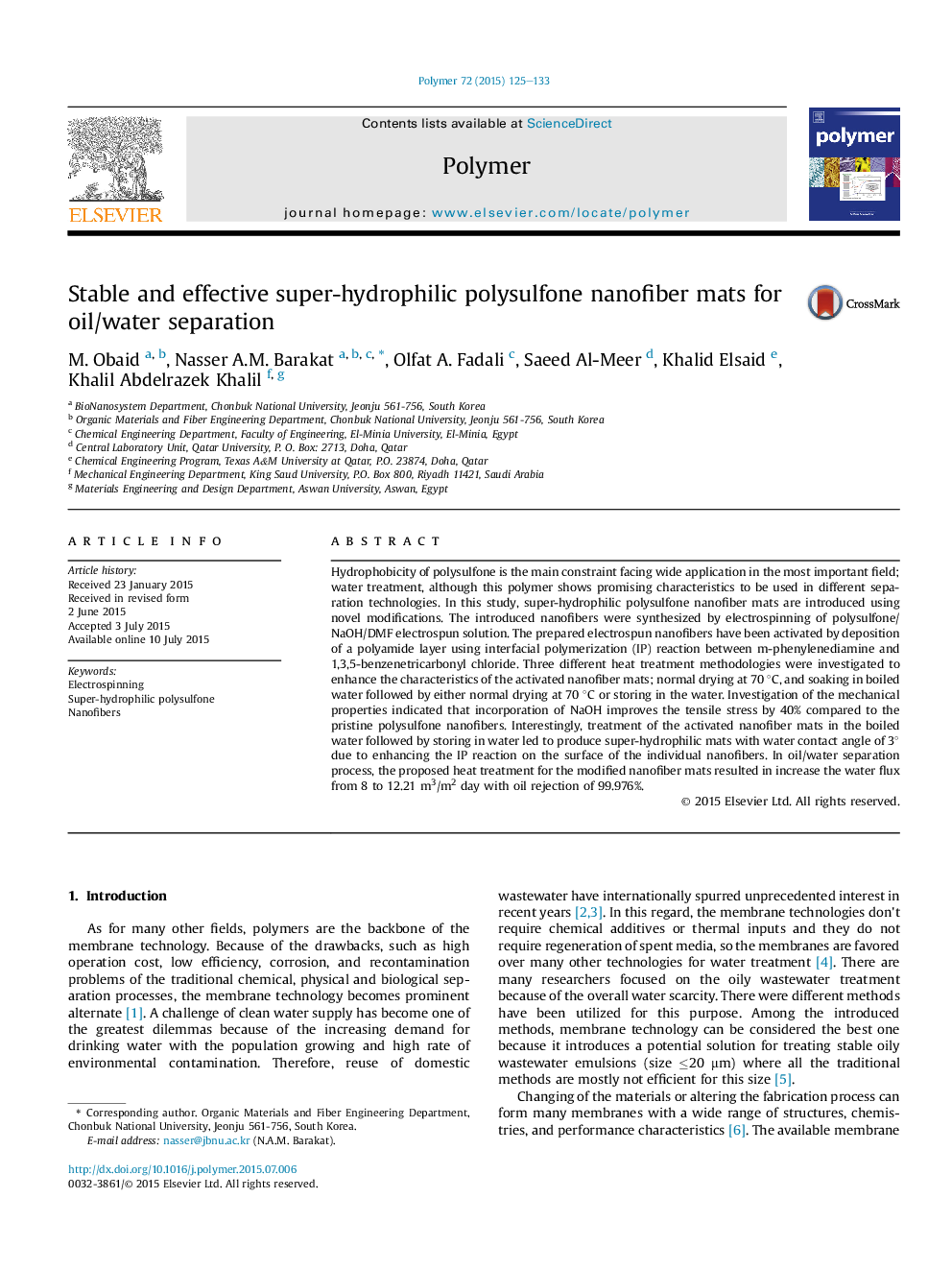| Article ID | Journal | Published Year | Pages | File Type |
|---|---|---|---|---|
| 5179817 | Polymer | 2015 | 9 Pages |
â¢Super-hydrophilic membrane based on PSF nanofibers is introduced.â¢The membrane was modified using simple and effective heat treatment process.â¢The corresponding water flux is very high; 12.21 m3/m2 day.â¢The fabrication process is simple, cheap and applicable.
Hydrophobicity of polysulfone is the main constraint facing wide application in the most important field; water treatment, although this polymer shows promising characteristics to be used in different separation technologies. In this study, super-hydrophilic polysulfone nanofiber mats are introduced using novel modifications. The introduced nanofibers were synthesized by electrospinning of polysulfone/NaOH/DMF electrospun solution. The prepared electrospun nanofibers have been activated by deposition of a polyamide layer using interfacial polymerization (IP) reaction between m-phenylenediamine and 1,3,5-benzenetricarbonyl chloride. Three different heat treatment methodologies were investigated to enhance the characteristics of the activated nanofiber mats; normal drying at 70 °C, and soaking in boiled water followed by either normal drying at 70 °C or storing in the water. Investigation of the mechanical properties indicated that incorporation of NaOH improves the tensile stress by 40% compared to the pristine polysulfone nanofibers. Interestingly, treatment of the activated nanofiber mats in the boiled water followed by storing in water led to produce super-hydrophilic mats with water contact angle of 3° due to enhancing the IP reaction on the surface of the individual nanofibers. In oil/water separation process, the proposed heat treatment for the modified nanofiber mats resulted in increase the water flux from 8 to 12.21 m3/m2 day with oil rejection of 99.976%.
Graphical abstractDownload high-res image (379KB)Download full-size image
